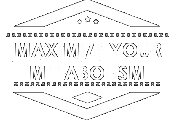“Do cardio workouts to burn fat! Exercise regulates our appetite and elevates our mood. Both are crucial for weight loss as detailed in this article.”
Now that I’ve introduced you to the metabolic underpinnings of my weight lifting program in a previous article, you’re ready to get started on the logistics of good cardio workouts to burn fat. Metabolic fitness includes both aerobic and strength-training elements, and they work together to produce total metabolic health.
As you learned in another previous article, aerobic exercises include that very large class of movements that can be performed only by burning huge amounts of oxygen. We’re talking about:
- running, jogging, spinning® (an aerobics class on bikes), power walking, cross-country skiing, etc.
Since they place such heavy demands on your heart and lungs, it should come as no surprise that they are excellent cardio workouts to burn fat and promote cardiovascular fitness.
They’re so important when it comes to increasing your metabolism because they burn calories. Not only does aerobic exercise burn more calories as you exercise, it keeps your metabolic rate high for several hours afterwards!
We’ve seen that proper exercise, along with a good diet that’s low in fat, moderate in carbohydrates, and high in protein, is crucial for metabolic control. Because both dieting and exercise help reduce body fat. Moreover, exercise works in still other ways to promote weight loss.
Exercise Regulates Appetite
Appetite has to do with our psychological desire for food. Hunger, in contrast, refers to our physiological requirement for nutrition. In other words, appetite refers to the food we crave, while hunger refers to the nutrition our bodies need.
Many people in America believe that exercise increases appetite, leading to increased calorie consumption and the risk of weight gain. Actually, just the opposite is true. Regular exercise moderates the cravings that can lead to weight gain.
With all those fad diets, we eat less because we make ourselves eat less—and this can actually increase our appetite. With exercise, we eat less because we want less.
This happens for well-documented physiological reasons that center on the hypothalamus which is a gland that’s located in the brain. And the hypothalamus exerts a specific type of control over our metabolic rate.
- Besides producing essential hormones, the hypothalamus triggers our sense of hunger.
- It is a commonly accepted theory that we feel hungry when the glucose supply to our brain gets too low.
- Sensing this, the hypothalamus sends out warnings of an impending food deficit.
- In response, we start thinking about food and our stomach contracts, leading to the sensation of “growling.”
- Then our body secretes chemicals, such as hydrochloric acid, to help us digest the upcoming meal.
Exercise inhibits hunger by raising the levels of certain chemicals in the blood and brain:
- glucose
- serotonin
- noradrenalin
- adrenalin
- dopamine
These chemicals send a signal to the brain to announce that the body is not hungry anymore. In effect, regular exercise leads us to say “I’m full” sooner than we would if we were not exercising regularly. What’s more, this sense of reduced appetite may last for as long as six hours after we finish exercising.
And Exercise Makes Us Crave The Good, Healthy Food
Other researchers have pointed out that the exercising body is much more likely to crave the foods that are important for physical performance. Many people who exercise regularly are drawn to the more wholesome complex carbohydrates and proteins that the body needs to function well.
Research suggests that exercisers lose weight because . . .
- of the body’s natural preference for good food and
- its aversion to fats and simple carbohydrates that inhibit athletic performance.
What does all this mean? Does it perhaps mean that the more we exercise, the less hungry we’ll be? NO! It means that proper exercise inhibits hunger—to a point. But remember, we’re building muscle density, and the denser the muscles, the more calories they will consume.
If we don’t supply them with FAT from our foods, they will burn the fat already stored in our body!!!
After all is said and done, we may be slightly hungrier as a result of exercising, but our body will crave foods that are more healthful and it will burn body fat for energy. And therein lies the magic!
Exercise Can Elevate Our Mood
Another contribution that exercise can make to the weight-loss process resides in its unique ability to alter mood. Depression, boredom, fatigue, and stress are very common complaints of Americans. Moreover, such complaints are quite prevalent among those who are overweight.
Mood swings can be problematic for anyone. Some people eat for the express purpose of filling an emotional void. Or they eat in order to ward off feelings of loneliness, boredom, or depression. It isn’t hard at all to see how so many people with emotional disorders end up becoming compulsive over-eaters. In effect, they use food to alter their mood. It’s similar to people who have an addiction to mind-altering chemicals.
Exercise, in contrast, provides a calorie-free “high” that dependably helps us manage our moods and our weight. The results of research studies undertaken on a nationwide scale have shown that adults who are physically inactive are at much greater risk of feeling the effects of mood than those who regularly engage in physical activity.
Most individuals report that they experience an overall sense of wellness or feel energized following vigorous aerobic exercise. Countless studies show that regular exercise favorably affects depression, anxiety, and mood state. Thus, exercise can also help improve a person’s self-esteem.
Getting Your Cardiovascular Training Program Started
Before you start doing cardio workouts to burn fat, it is best to demonstrate some good, common sense and see your doctor. As perfunctory as this advice may seem, it’s a great step to take—and for reasons far more important than the obvious.
- First of all, a complete physical exam will yield important information about the condition of your heart.
- For example, The American College of Sports Medicine warns that people with a history of high blood pressure or abnormal resting EKGs, or a family history of heart disease, run a higher-than-average risk of causing injury to the heart as a result of performing certain exercises.
- Only your physician can provide the information you need to make an intelligent decision in this regard.
- Also important is the feedback you’ll get—if you ask for it—in the way of test results from your doctor’s lab. Any qualified lab will scrutinize your blood chemistry and give you important information that will enable you to track your fitness progress.
By knowing HDL and LDL cholesterol levels, for example, you can chart improvements in your body chemistry as you exercise. The same is true of the levels of triglycerides and glucose in your blood. Since these levels can be improved through exercise and diet, you’ll gain solid evidence of how unseen chemical reactions in your body are improving through the use of good cardio workouts to burn fat.
Test Your Physiological Condition
Your next step is to find out what kind of physiological shape you’re in. Again, this is recommended simply to help establish benchmarks regarding your present condition. So that you can set reasonable expectations when you’re doing cardio workouts to burn fat. And you can have a feel for what your rate of progress should be in the weeks and months ahead.
Any quality health club can provide a number of different tests that take only a few minutes each. These tests can show you how you stack up—in terms of key fitness components such as muscle strength, cardiovascular fitness, and flexibility—against others in your age group.
The beauty of these tests is that once you’ve taken them, you can intelligently set goals and chart your progress. You may, for example, wish to reduce your resting heart rate from its present 75 beats per minute to a new goal of 65. Or you might want to reduce your heart’s recovery time. Every area of fitness that you succeed in improving will assist you in creating a more powerful metabolism and a healthier body.
Rating Cardiovascular Exercises
There are an almost-unending variety of cardio workouts to burn fat. You have so many choices when planning your aerobics program.
- Certain cardio workouts can be done only in summer, while others only in winter.
- Some are strictly indoor pursuits, while others are clearly outdoor activities.
- Some involve specialized equipment, while others can be done with just a good pair of shoes and a T-shirt.
In this article and the next, we’ll focus exclusively on good cardio workouts to burn fat. I’m talking about those exercises that most easily lend themselves to some sort of objective measure of improvement in health and fitness.
The easier it is to measure the number of calories expended, the easier it will be to predict the results you will realize from doing an exercise. This is one of the main reasons why I believe everyone should become a member of a good health club.
Health clubs provide measurable results, whereas outdoor activities are harder to measure because of all of the external variables that tend to modify one’s daily exercise program (wind direction, temperature, and precipitation, as well as factors such as the presence of cars, trucks, or other exercisers that get in the way while you’re trying to jog or ride a bike).
Good Cardio Workouts To Burn Fat
Aerobics classes are one example of a good total-body exercise. To get really dramatic results from this type of activity, however, people often go the high-impact-exercise route, where overuse injuries are common.
Running and jogging on a treadmill are also great exercises for cardiovascular conditioning. But again, they are high-impact exercises that frequently cause an undue amount of damage to the feet, ankles, legs, or hips. If done without regular stretching, these exercises can actually reduce flexibility. Proper use of a treadmill, however, considerably reduces your chances of injury, and it allows you to monitor your heart rate at the same time.
Indoor rowing (on a rowing machine) is one of the top-rated aerobic exercises.
Spinning® and indoor rock climbing are two of the best aerobic exercises you can choose—according to some studies, at least. They tend to be gentler on joints and bones than the high-impact exercises. And yet they aid in conditioning all the major upper- and lower-body muscle groups.
Walking on a treadmill has always been one of the most popular cardio workouts to burn fat, but it needs to be done at a brisk, “power-walking” pace to get the full cardiovascular benefit. Most people don’t walk fast enough, or at a high enough incline, to get an aerobic workout.
Exercising The MYM (Maximize Your Metabolism) Way
No matter what sort of exercise you choose, it should be incorporated into a proven system that maximizes aerobic effect and minimizes personal injury. The MYM formula was created after years of personal study and input from many major health and fitness associations such as the American College of Sports Medicine. It includes five crucial elements:
- Aerobic warm-up
- Minor stretching
- Aerobic and strength conditioning
- Aerobic cool-down
- Final, more-detailed stretching
If at first glance this looks like a lot of exercise, don’t let it overwhelm you. You have a choice of when to do both your aerobic and strength-conditioning workouts, either on the same day or on an alternating basis. Your warm-up, stretching, and cool-down sessions will be fairly brief, as explained in the next article, but they do need to be part and parcel of every workout session. >> Next Page – Check out the Cardio Workout part of the MYM formula


